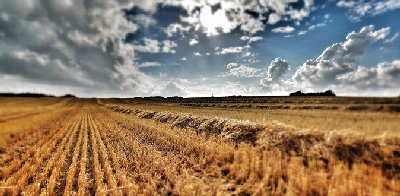
According to the UN population projections, the world population will exceed 9.7 billion by 2050 and 11.2 billion by 2100 [23]. With an ever-increasing population and limited land suitable for cropping, higher utilization of resources and optimized farming is essential in order to meet the increasing food demand. In the last decades farming machinery have been improved and become more efficient, but are now reaching the limits of what is possible. The vision for future farming embody precision farming, where farming operations are to be carried out by fleets of small intelligent autonomous machines rather than large complex machines. The first crucial step towards the future vision is creation of a generic framework that can support logistics planning, real-time supervision, and guidance to operators of machinery in farming operations. In the automotive industry, logistics optimization introduced huge savings and it is expected that similar results will apply in the agricultural industry, especially when the fleet size increases.
For all farming operations, logistics optimization involves generation of a common plan including individual vehicle routing and possibly inter-vehicle coordination, which is required for instance during unloading in a harvest operation. The overall goal of the logistics optimization is to minimize travel distance and waiting time for the involved resources. Another very important aspect of the optimization is minimization of soil compaction. Soil compaction leads to pour yield output and is a huge challenge with heavy machinery [16]. Through optimization and simulation of farming operations it is possible to visualize the resulting soil compaction and to take well founded decisions on how to minimize it in future operations.
The aim of this project case is to support optimization of the full logistic chain in any farming operation, with any type and size of fleet, with main focus on traditional fleet configurations. This optimization support includes off-line simulation and visualization of the farming operation provided by a Planning Tool and a real-time Optimization Guidance System, that enable operators to follow the calculated optimized plan, similar to the GPS in cars. To clarify, this project does not consider autonomy or safety of the involved vehicles, although this is the next step in the back casting strategy, but relies on operators to control and steer each vehicle according to a given plan. We collaborate here with AGCO, Danish A/S.
Contact: Morten Bilde, AGCO, morten.bilde@agcocorp.com
